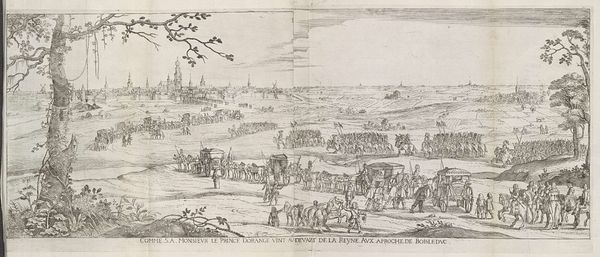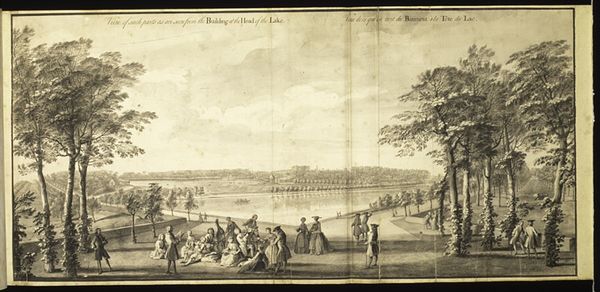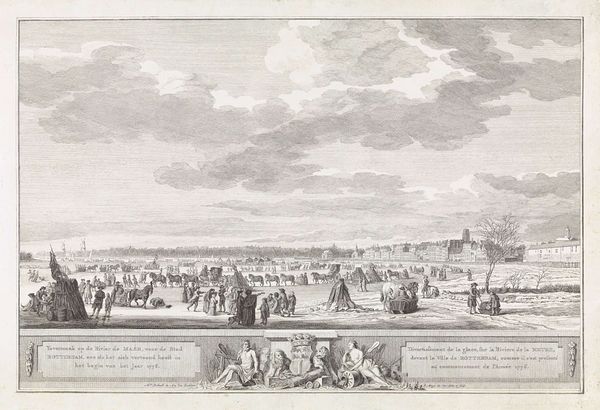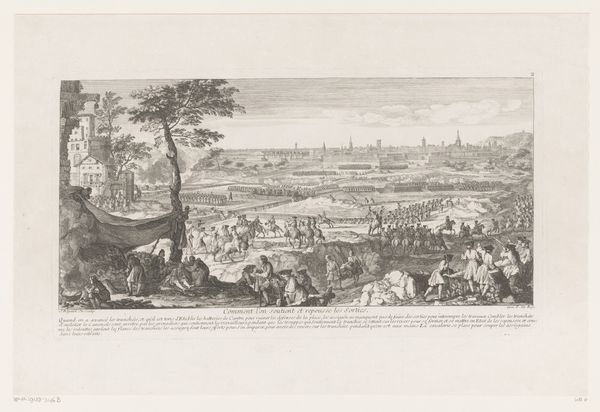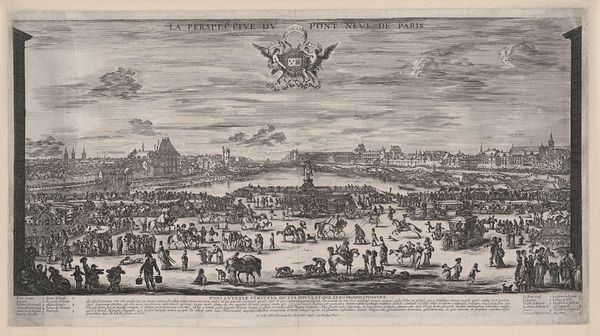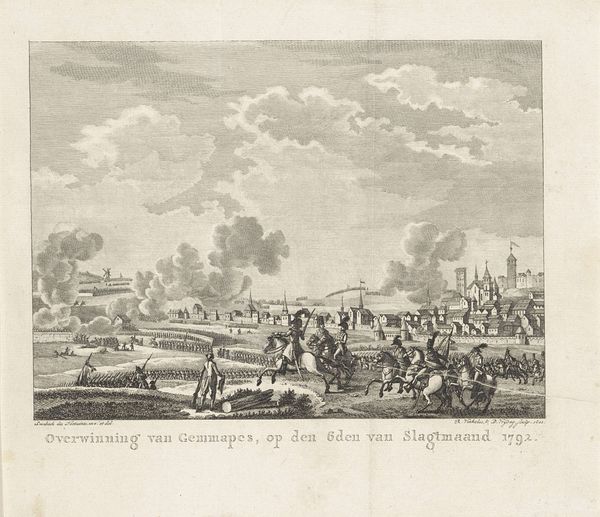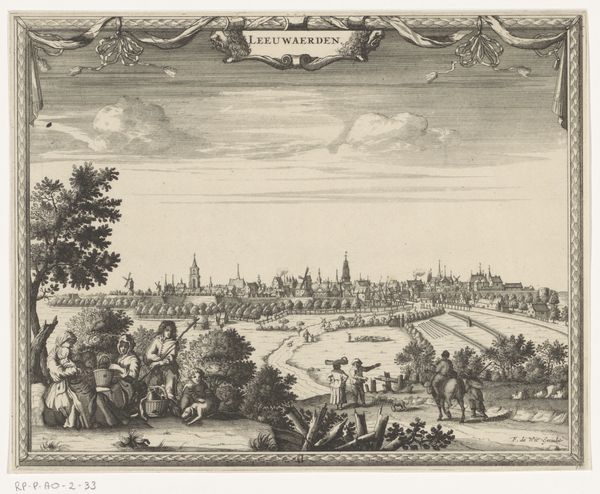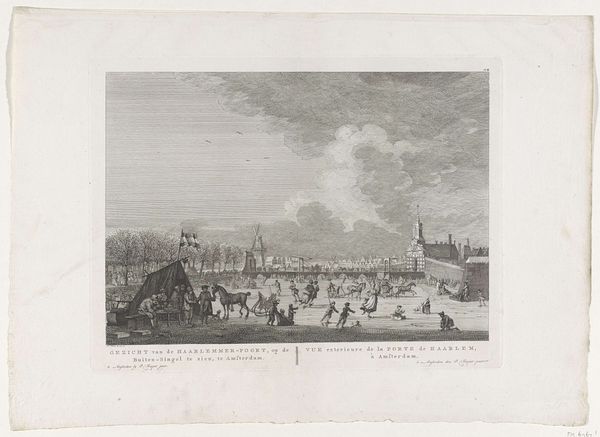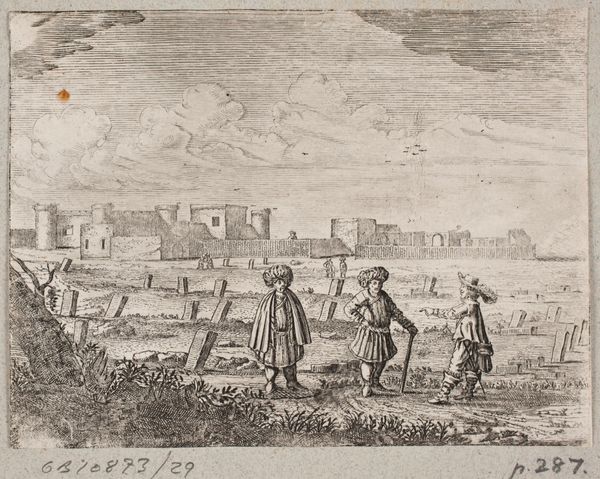
Uittocht van het Spaanse garnizoen uit Hulst (blad b), 1645 1645
0:00
0:00
print, engraving
#
dutch-golden-age
# print
#
old engraving style
#
landscape
#
line
#
history-painting
#
engraving
#
realism
Dimensions: height 239 mm, width 291 mm
Copyright: Rijks Museum: Open Domain
Curator: Welcome. We’re looking at Claes Jansz. Visscher's print, “Departure of the Spanish Garrison from Hulst," created in 1645. Editor: It's striking how much empty space dominates this engraving, despite all the activity it depicts. A very grey rendering. Curator: Visscher captured a significant moment in the Eighty Years' War. Hulst, a city in what is now the Netherlands, had been under Spanish control, and this print commemorates the end of that occupation. We must recall that prints like this served as political documents. Editor: Absolutely. It’s intriguing how he visually structures power. The retreating Spanish garrison appears rather dejected and strung out across the land. They look humbled by this visual portrayal of retreat. Curator: It’s propaganda, definitely portraying a specific viewpoint, of the end of opression, if we must. Consider where this image would be circulated – places recently liberated from Spain? What messages about the Dutch, and about future rebellions might it contain? Editor: The inclusion of everyday townspeople suggests that history isn't just about monarchs or generals but also the populace's experience of war and transition. They bear witness and become incorporated into the narrative. It also speaks to the visual power in images which tell an emotionally loaded narrative of displacement. Curator: The stark contrast between the meticulous detail of the figures and the minimalist rendering of the Dutch landscape invites us to reflect on the costs of war – how the social and ecological landscape becomes changed after every war, every siege. What kind of narrative for today can we apply to Visscher's piece? Editor: It's interesting to consider how representations like this one shaped historical consciousness, forming public memory in specific and perhaps biased ways. Thanks for walking me through this historical engraving, it speaks a lot about social, cultural and political issues during war, but after all we see it with different lens nowadays, with new significance. Curator: Indeed, it seems that even simple black lines of a historical drawing holds complexities that are worth exploring to broaden our view.
Comments
No comments
Be the first to comment and join the conversation on the ultimate creative platform.


